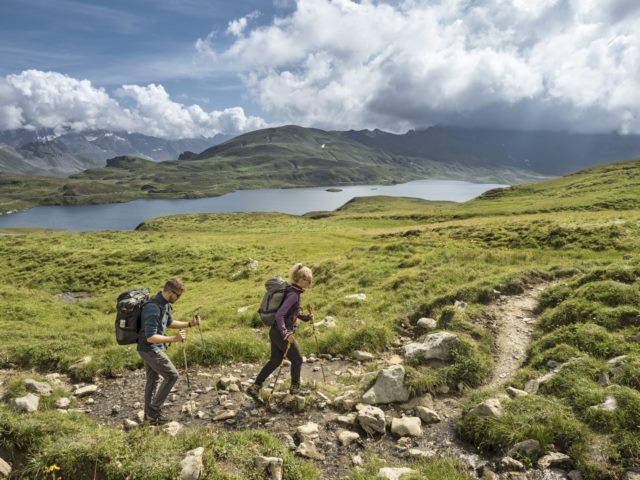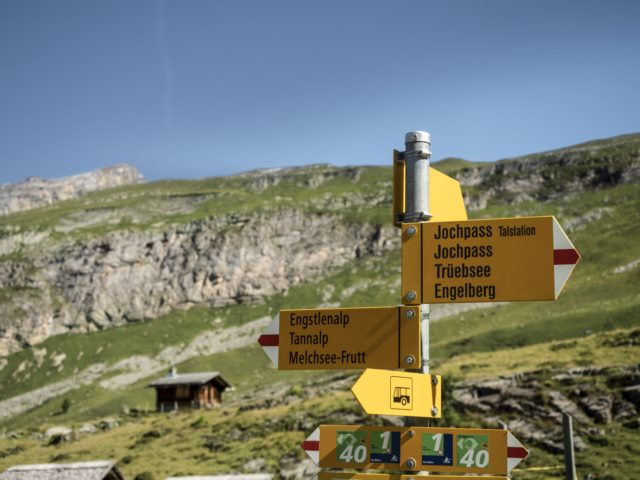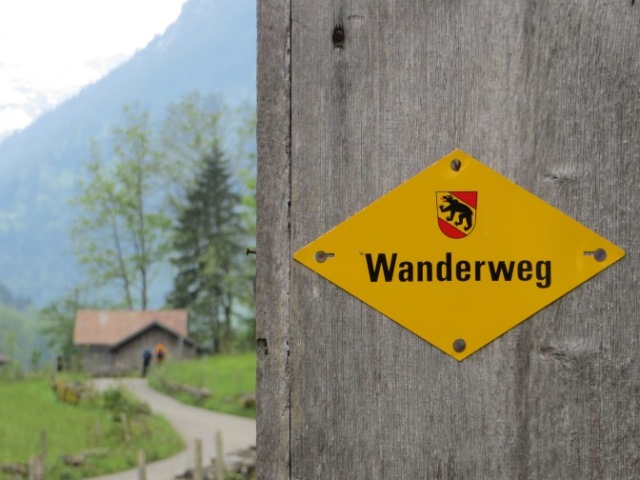الجمعة, فبراير 24th 2023

In a country with 62,416 km of marked trails, it should come as no surprise that hiking is the most popular sport in Switzerland.
Hiking may not be Switzerland’s official national sport, but it is the most popular one, according to the latest government statistics. Nearly half of 15-74 year-olds living in Switzerland are avid hikers, and 8% even consider hiking their main sport. Moreover, most of those hikers spend at least 20 days a year on the trails, on average. As the pandemic shuttered most other options for socializing safely, the Swiss simply returned to their roots. The popularity of hiking soared even higher in 2020 and 2021.
The Swiss don’t just enjoy hiking, it’s part of their culture beginning at birth. It is not an uncommon site to see a family trekking up a Swiss mountain, carrying a baby on their back while older children run ahead. College students and young professionals will spend every sunny Sunday on the trails, stopping for a beer at one of the many mid-hike restaurants. Even elderly, white-haired groups of hikers are a common sight on the mountains (and perhaps the key to their longevity).
One of the main reasons for the sport’s popularity is its accessibility. Most hiking trails are accessible from every city or village in Switzerland, thanks to an infrastructure of trains, chair lifts and gondolas. Moreover, the wide variety of Swiss hiking trails will appeal to everyone from more experienced hikers to beginners, and some trails are even designated for stroller and wheelchair use. Hikers can find a comprehensive list of routes organized by location, theme, and fitness level on the Swiss Mobility website.

The ultra-organized network of Swiss hiking trails are color-coded by skill level, marked by how long the hike will take and labeled with symbols for cable cars and restaurants.
Switzerland’s hiking history began in 1930 with teacher Jakob Ess. Wanting to escape the traffic and pollution, Ess took his pupils from Zurich on a walking trip and found the their route packed with vehicles. Ess began seeking out special hiking paths and this passion led him to found the Swiss Hiking Trail Federation a few years later. Through the organization, he created a unified system of way-makers that consisted of yellow signs with black writing on it. The system proved to be effective and is still used to this day. The signs not only guide hikers on the right path, they also inform them how long the route will take while walking an average speed of 4.2 km/h. Maintaining these trails is not an easy nor inexpensive task, but organizations like the Schweizer Wanderwege (Swiss Hiking Path) make it happen.
In collaboration with groups of volunteers, the organization clears and repairs paths and makes sure everything is safe for hikers. For example, when weather elements narrow a trail or make for slippery conditions, the volunteers install safety cables for hikers to grasp. They also ensure that every trail has the right signage: There are more than 50,000 diamond-shaped yellow signs all over the country marking hiking trails. Maintaining the hiking trails is so important to the Swiss, that it is actually written into their Federal Constitution.
Choosing from more than 38,000 miles of hiking trails may seem daunting at first, but the Swiss have organized their trails by what a hiker wants to get out of their experience. One might want to focus on the views for example. If that’s the sisuation, you would enjoy something like the Chäserrugg path – a panorama trail along the cliffs of the Walensee. Another factor to consider is time. If you don’t want to spend more than a morning hiking then the Hörnliweg could be the right one for you. This one takes you within eyesight of the Matterhorn in approximately two hours.
It’s also important to consider one’s hiking skill level because some routes may simply be too challenging for beginners. Trails marked with yellow signs, which account for about 65% of all Swiss trails, are suitable for most walkers. Trails with pink signs are winter walking trails specially manicured for snow and ice. Trails marked with red and white striped signs are more challenging and may require cleats or trekking poles. Technical alpine routes are marked by blue and white striped signs and make up only 1% of trails. These require ropes, harnesses and helmets.

“Wanderweg” is German for hiking or walking path. These yellow markers dot Swiss trails.
Most Swiss people turn a hiking trip into a social event – bonding with family, meeting with regular hiking groups or sharing a beer with friends at restaurants along the trail. Even if you start your hike alone, you might reach the end with a new acquaintance you made on your way. Some have met their future spouses while hiking through Switzerland, which is why you should greet every person you meet on the trail. It is customary to say “Good day” to each hiker you pass, whether in French, German, Swiss-German or Italian, depending on what region of Switzerland you’re hiking through. When in doubt, “hello” is always acceptable.
More than what meets the eye
It’s not just the accessibility of the Swiss trails and the views you can see from them that draws hikers from around the world, it’s the way hiking makes them feel that draws them back again and again. Obviously, there are physical benefits to hiking and when done on a regular basis; hiking can greatly improve one’s sleep, blood pressure and overall health. But it’s the mental health benefits, the lowered risk of depression and the improved mood, that hikers find so addicting. Research shows that people who hike are simply happier than those who do not.
يمكن مشاركة هذه المقالة وإعادة طباعتها مجاناً، شريطة أن تكون مرتبطة بشكل بارز بالمقالة الأصلية.
